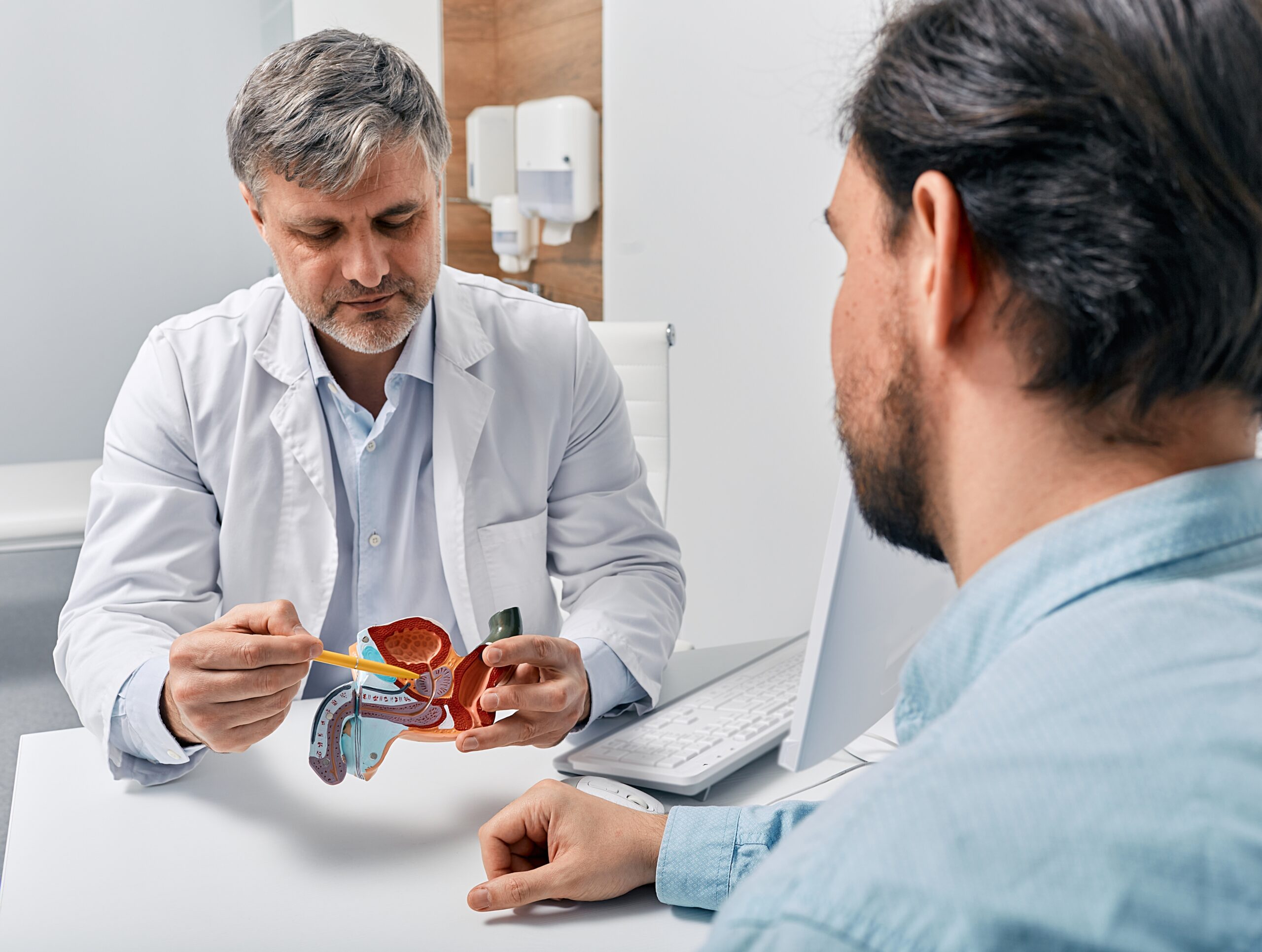Embolisation de la prostate : traitement qui préserve la sexualité
Un traitement non chirurgicale sans éjaculation rétrograde et sans incidence sur la sexualité
Take a appointment
Prenez rendez-vous avec des spécialistes de la prostate

Prostate embolization: An innovative alternative
L'prostate embolization is a state-of-the-art technique used to treatbenign prostatic hypertrophy (BPH), a condition common in older men that causes an enlargement of the prostate gland and urinary disorders. This modern, non-invasive treatment reduces the size of the prostate by blocking blood flow to it. It offers an alternative to conventional surgical procedures, and is a very effective way of reducing the size of the prostate. success rate with impressive results in improving symptoms.
How is prostatic artery embolization performed?
L'prostate embolization is carried out by a interventional radiologist and takes place under local anaestheticmaking the procedure more comfortable for the patient. The physician inserts a catheter into the femoral or radial artery, starting from the wrist or groin, and guides this catheter to the prostatic arteries. Thanks to radiological imaging, the radiologist injects microspheres in the vessels supplying the prostate to block the blood supply.
By reducing the blood supply to the prostate, embolization gradually reduces the size of the prostate.prostate adenomathus relieving lower urinary tract symptoms such as difficulty in urinating, sensation of blockage or high urinary frequency.
Advantages of prostate embolization treatment
L'prostatic artery embolization offers many advantages over other therapeutic options for the treatment of BPH :
- Less invasive : Unlike surgery, embolization does not require major incisions, thus reducing the risks of bleeding, d'urinary tract infectionor scars.
- Preserving sexual function : Unlike some surgical procedures, such as TURP, which can lead to side effects such asretrograde ejaculationembolization preserves the sexual function without compromising libido or causing erectile dysfunction.
- Fast recovery Recovery from embolization is rapid, enabling patients to resume their daily activities within two or three days of the procedure.
- Long-term effectiveness Many patients report a lasting improvement in their symptoms, with a low recurrence rate and a progressive reduction in prostate size.
Less risk of complications Serious complications associated with this procedure are rare. Compared with surgery, embolization offers a superior safety profile, making it an option for care particularly suitable for older patients or those with contraindications to surgery.
Comparison with other treatments for benign prostatic hyperplasia
Treatments for BPH include drug treatmentsThese include surgical procedures, as well as minimally invasive techniques such as embolization. Here's a comparison with other common treatments:
- Drug treatments : The alpha-blockers and 5-alpha reductase inhibitors are often prescribed to relieve urinary symptoms, but they do not significantly reduce the size of the prostate. What's more, they can cause side effects such as dizziness, erectile dysfunction or retrograde ejaculation.
- Transurethral resection of the prostate (TURP) RTUP: This traditional surgical procedure involves removing part of the prostate through the urethra. Although highly effective, TURP does carry the risk of complications such as bleedingand urinary tract infectionsand sexual side effects, includingretrograde ejaculation.
- Rezum (steam treatment) This method involves injecting steam to destroy excess prostate tissue. Although this technique is effective, results can vary, and complications such as urinary bleeding or a urinary incontinence are possible.
Embolization, on the other hand, combines the long-term efficacy of prostate reduction with a superior safety profile, offering a less invasive option that is better tolerated by patients.
Préservation de la fonction sexuelle après une embolisation de la prostate
One of the major advantages of embolization is that it preserves the sexual functions of the patient, including erectile function and ejaculation. Unlike other surgical treatments, embolization does not induceretrograde ejaculationThe sperm returns to the bladder instead of being expelled through the urethra. This guarantees a better quality of sexual life.
Success rate of prostate embolization
A success rate theprostate embolization is high, with around 80 to 90 % of patients have seen a significant improvement in their urinary symptoms after surgery. In contrast to surgical treatments more invasive, such as transurethral resection of the prostate (TURP)embolization offers a lower risk of complications and a much faster recovery. This makes it a preferred solution for men suffering from benign prostatic hypertrophy but wish to avoid surgery.
L'prostate embolization is a revolutionary technique for treatment of prostate adenoma and urinary disorders relatedbenign prostatic hypertrophy. It offers a success rate with a low risk of complications and rapid recovery. As a non-invasive treatment, it preserves the sexual functionIt avoids scarring and allows effective management of urinary symptoms without the risks associated with traditional methods. surgical treatments more invasive.
If you suffer from prostate hypertrophy orBPH and you're looking for a less invasive solution than surgery, embolization may be the best option for you. Consult a interventional radiologist at IMPC to discuss your symptoms and determine whether embolization is the right choice for your situation.
